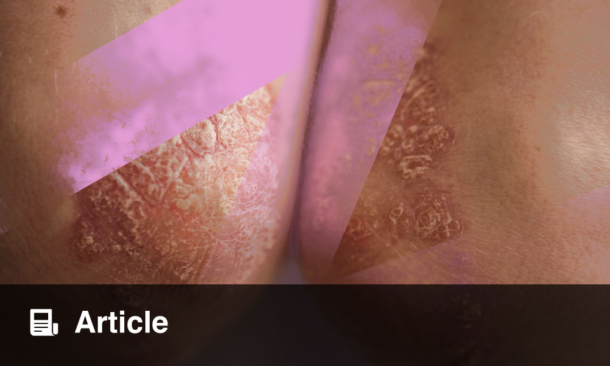Authors: Mary Nan Leath,1 Hannah Neimy,1 Evelyn Fagan,2,3 *Milaan Shah4
1. College of Medicine, Medical University of South Carolina, Charleston, USA
2. School of Medicine, Mercer University, Savannah, Georgia, USA
3. Department of Dermatology, University of Nebraska Medical Center, Omaha, USA
4. Department of Dermatology and Dermatologic Surgery, Medical University of South Carolina, Charleston, USA
*Correspondence to [email protected]
Disclosure: The authors have declared no conflicts of interest.
Keywords: Abrocitinib, atopic dermatitis (AD), JAK inhibitor (JAKi), ruxolitinib, upadacitinib.
Citation: Dermatol AMJ. 2025;2[1]:16-19. https://doi.org/10.33590/dermatolamj/MHVG1609.
![]()
ATOPIC dermatitis (AD) is one of the most common chronic inflammatory skin diseases in the world, affecting 15–25% of children and 3–7% of adults.1,2 Beyond its physical burden, AD is associated with allergic, cardiovascular, and psychiatric comorbidities, further reducing patients’ quality of life.3,4 Given its chronic and systemic nature, effective long-term management of AD is essential and makes newer therapies increasingly important.5 JAK inhibitors (JAKi) in particular have emerged as a novel medication class that modulate both Th1 and Th2 pathways, offering a promising treatment alternative for patients with moderate-to-severe AD. The recent 2025 American Academy of Dermatology (AAD) Annual Meeting featured several updates and reviews on JAKi by leading experts in the field, which the authors summarize in greater detail below.
Eric Lawrence Simpson, Oregon Health & Science University, Portland, started the conference with a presentation entitled, “Systemic therapy for adults – what’s here/what’s coming?” on systemic therapies for AD. In that discussion, he noted that JAKi should warrant consideration as a first-line systemic therapy for AD. Despite the advent of dupilumab for AD treatment, recalcitrant disease persists for many patients. Simpson emphasized that treatment alternatives such as JAKi are “good choice(s) for inadequate response to biologics”, also noting that JAKi have demonstrated greater efficacy in head-to-head studies with dupilumab. The efficacy and safety of particular JAKi were covered in further detail by subsequent presenters.
LATEST UPDATES ON JAK INHIBITORS
Abrocitinib
Shawn Kwatra, University of Maryland School of Medicine, Baltimore, highlighted key clinical trials that established efficacy and safety standards for JAKi in the treatment of AD in his presentation entitled, “JAK inhibitors for atopic dermatitis, prurigo nodularis, and pruritus”. His presentation started with a review of JADE MONO-1 and 2, which compared abrocitinib 100 mg, 200 mg, and placebo, in the treatment of moderate-to-severe AD in participants ≥12 years of age. At Week 12, a significantly greater percentage of participants taking abrocitinib had achieved Investigator Global Assessment (IGA) scores of 0/1 and had reductions of at least 75% in Eczema Area and Severity Index (EASI) scores (EASI-75), compared to placebo. Additionally, he noted that abrocitinib resulted in significant itch relief by Week 2 compared to placebo.
Kwatra next discussed JADE COMPARE, a trial that compared abrocitinib 200 mg and 100 mg to dupilumab 300 mg and placebo for the treatment of moderate-to-severe AD in adults. Similar to the JADE MONO trials, the primary endpoints at Week 12 showed significant improvements in IGA and EASI-75 for abrocitinib 200 mg and 100 mg compared to placebo. He also discussed that abrocitinib 200 mg also resulted in faster itch relief compared to dupilumab and placebo. He also explained that the secondary endpoints for abrocitinib, including IGA and EASI-75 at Week 16, did not differ significantly from dupilumab.
Kwatra concluded his abrocitinib discussion with the JADE EXTEND trial, which evaluated the efficacy and safety of abrocitinib in participants previously treated with dupilumab in JADE COMPARE. Interestingly, patients who responded to dupilumab maintained their benefits when treated with abrocitinib, but many patients who did not respond to dupilumab achieved improved skin clearance and itch relief by Week 12 when taking abrocitinib. Kwatra emphasized that abrocitinib may provide a viable alternative treatment for patients with AD who do not respond adequately to dupilumab.
Upadacitinib
Kwatra’s session continued with a review of the Measure Up 1 and 2 trials, which evaluated and compared the efficacy of upadacitinib 30 mg and 15 mg versus placebo, for patients with moderate-to-severe AD >12 years of age.7 At Week 16, patients on both upadicitinib dosages demonstrated significant improvements in IGA and EASI-75 compared to placebo. Furthermore, Kwatra emphasized that in both trials, upadacitinib demonstrated a significant improvement in itch compared to placebo as early as 1 week into treatment. He concluded this portion of his presentation with a brief review of the safety data, which showed that no major safety signals occurred in these trials.
Ruxolitinib
In his talk entitled, “Topical therapy”, Lawrence F. Eichenfield, University of California San Diego School of Medicine, La Jolla, California, reviewed the TRuE-AD1 and TRuE-AD2 trials, which were the pivotal trials that investigated the efficacy and safety of topical ruxolitinib for patients aged ≥12 years with mild-to-moderate AD. In both trials, he noted that patients applying ruxolitinib 0.75% and 1.5% experienced significant improvements in IGA after 8 weeks, compared to vehicle. Ruxolitinib 1.5% also significantly reduced itch within 12 hours compared to vehicle. Eichenfield concluded that topical ruxolitinib presents a promising non-steroidal treatment option for AD, especially amid growing patient concerns over topical corticosteroids.
PEDIATRIC USE
Amy S. Paller, Feinberg School of Medicine, Chicago, Illinois, presented her talk entitled, “Systemics for pediatric patients – are we there?”, and reviewed a 2025 network meta-analysis comparing the efficacy of JAKi versus dupilumab in pediatric patients with AD. Risk differences (RD) for clinical improvement were estimated using a random-effects model. Upadacitinib 30 mg demonstrated the highest efficacy (RD 0.62), which Paller interpreted as: “62% more patients achieved clinical improvement compared to placebo.” Other treatments included dupilumab 300 mg combined with topical corticosteroids (TCS; RD 0.43), abrocitinib 100 mg (RD 0.40), and abrocitinib 200 mg (RD 0.40). Of note, baricitinib doses below 2 mg showed no benefit over placebo. Paller did acknowledge some limitations with the analysis, such as the inclusion of only eight randomized controlled trials, and the incongruence in enrollment ages between JAKi and dupilumab trials. She concluded that oral JAKi may be favorable for managing AD flares and could offer added benefit for patients with concurrent vitiligo or alopecia areata.
SAFETY
In his talk entitled, “Understanding the safety profile of JAK inhibitors and monitoring patients”, Brett King, Yale University School of Medicine, New Haven, Connecticut, focused on the safety of JAKi and reviewed adverse events linked to JAKi use, as identified in the ORAL trial, which compared the efficacy and safety of tofacitinib and TNF-α inhibitors in patients with rheumatoid arthritis (RA), and ultimately led to the development of the box warnings carried by the medication class.
King initially summarized the common side effects of JAKi, including upper respiratory infections, headaches, nasopharyngitis, nausea, and acne. He then discussed the ORAL study results, which revealed an increased risk for malignancy and all-cause mortality, including sudden cardiovascular death, major adverse cardiac event (MACE), and thrombosis among JAKi users, especially those with a history of smoking. King importantly pointed out, however, that the study population consisted of high-risk patients who were aged ≥50 years, had a diagnosis of RA, and had at least one additional cardiovascular risk factor. Additionally, every participant was also taking methotrexate, and half of the patients were concurrently on systemic corticosteroids.
King then raised an important question: “Are the risks of JAKi in AD the same as in RA?” He suggested that the answer is no: a study comparing the safety of baricitinib in RA and AD found higher incidences of venous thromboembolism, MACE, and malignancy in RA than in AD. He noted that JAKi have a more favorable safety profile in dermatologic diseases, but advised that clinicians should exercise caution when treating patients who are over 65 years of age, obese, or have a history of smoking, diabetes, coronary artery disease, thromboembolism, or malignancy. Prior to JAKi initiation, he recommended comprehensive infectious disease screening, including a hepatitis panel and HIV and tuberculosis testing, and baseline chemistry, blood count, lipid panel, and liver function tests. He advised repeat fasting lipids, aspartate aminotransferase, alanine aminotransferase, and complete blood count with differential at Week 4; repeat aspartate aminotransferase, alanine
aminotransferase, and complete blood count every 3–6 months or after dose increases; and repeat tuberculosis screening annually. He also reinforced the importance of up-to-date vaccinations, annual skin checks, and age-appropriate cancer screening. He concluded his talk by outlining the discrepancy in the risks and benefits associated with JAKi use compared to the impact of untreated AD; a compelling argument for the use of these medications for this inflammatory dermatosis.
CONCLUSION
As summarized by the leading dermatology experts at AAD, JAKi are a unique class of medications that target the Th1 and Th2 pathways, offering broader immune modulation, and thus, therapeutic indications than Th2-predominant biologics. While JAKi slightly increase infection risk and carry an associated box warning, they are efficacious, safe, and well tolerated, as seen in data released over the last 4–6 years, which further supports that thromboembolic, malignancy, and MACE risks remain low. JAKi are a valuable contribution to the treatment armamentarium for AD and present a treatment option for patients who are inadequately treated with other therapiesand/or are in need of rapid improvement.







